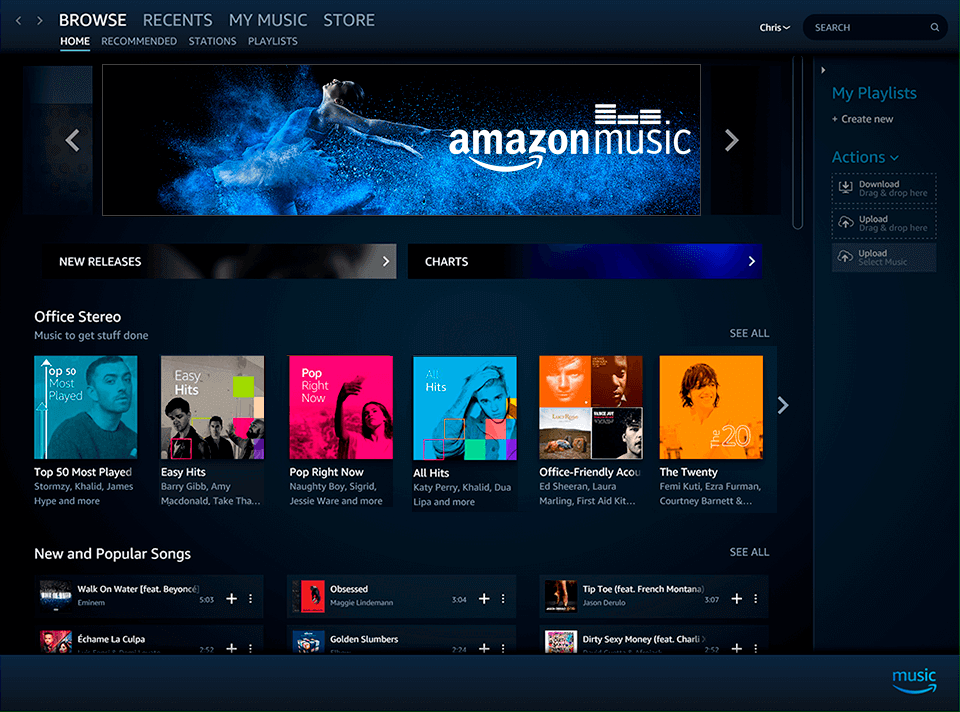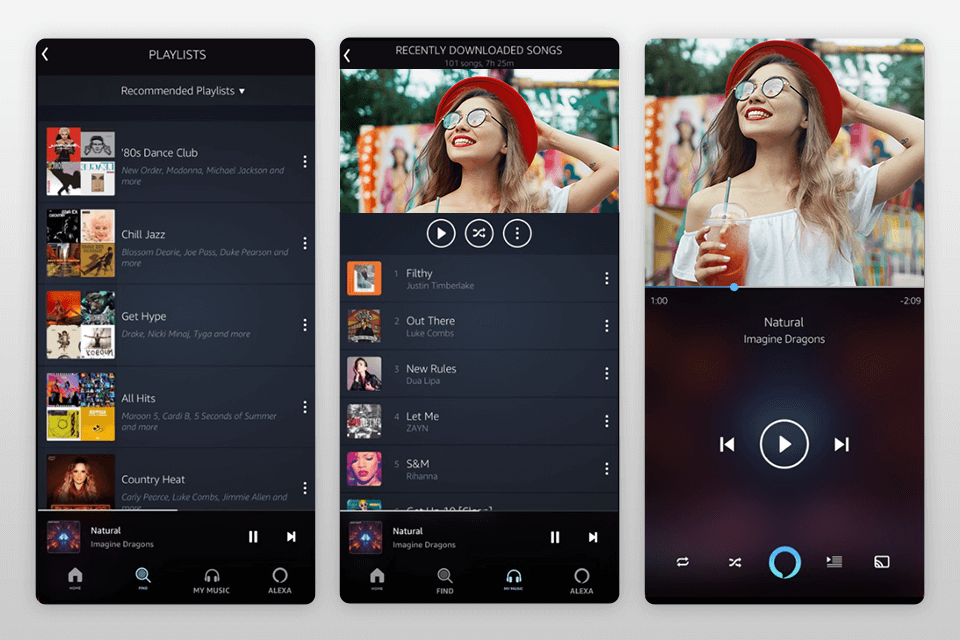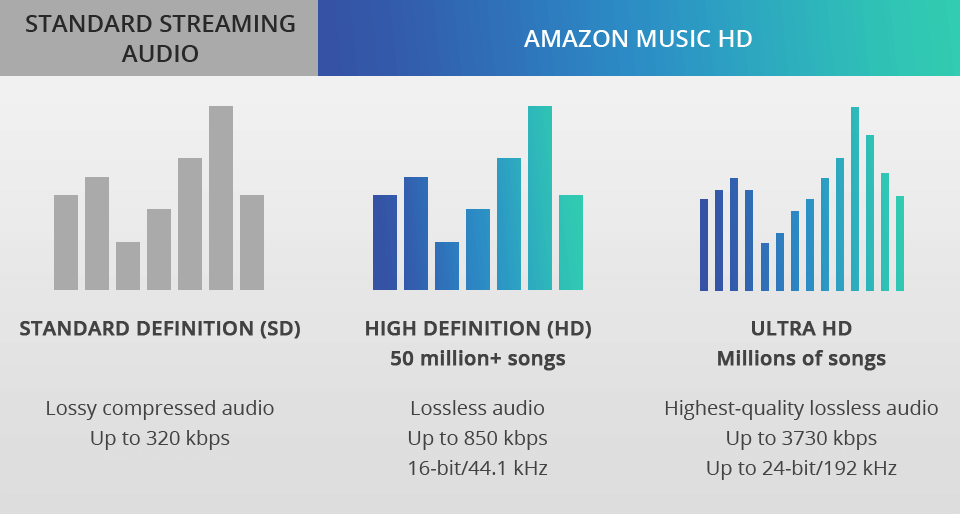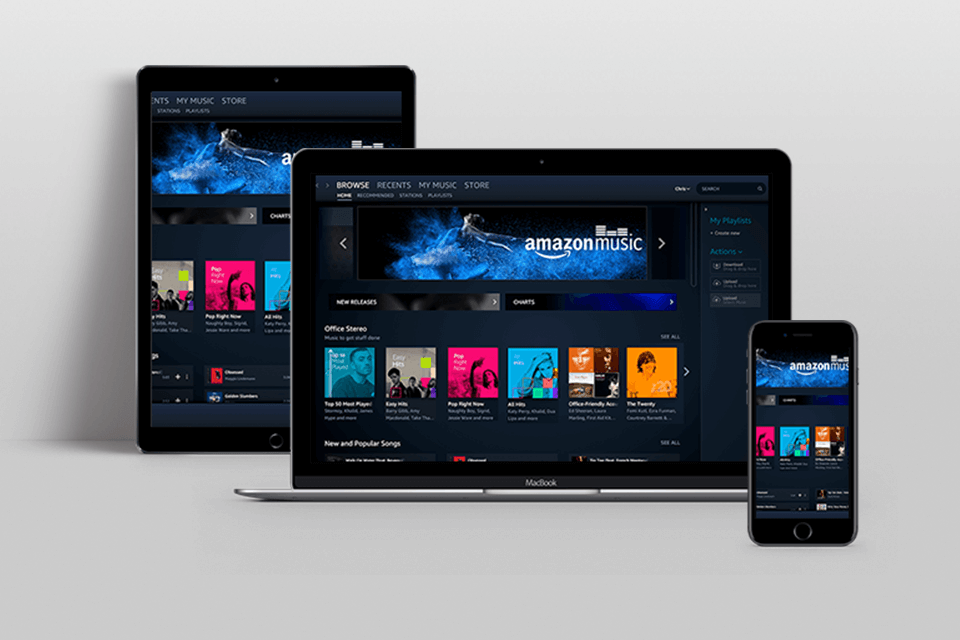Amazon Music Hd Review 2025
Price: $12.99/month

VERDICT: If you were interested in hi-res streaming before but didn’t feel like paying for it, Amazon Music HD will be a great option for you, especially if you already have a subscription for Amazon Prime. Amazon openly claimed that they want to compete with Tidal, which has been at the top of the list of lossless audio listening services for 6 years now.

It is cheaper than competitors and this feature attracts many music lovers. Amazon Music HD is already available in four countries: the USA, UK, Germany, and Japan. Users are offered a 90-day trial subscription. You can listen to music on both mobile and desktop devices as well as gadgets from Amazon.
- If you need to use good cloud storage, read about Full Amazon Prime Photo Review.
Amazon Music HD Review
Amazon Music HD allows you to listen to lossless music at a more pleasant price than well-known competitors. But can Amazon offer the same quality of service? I will tell you about it in this Amazon Music HD review.
Support for Offline Audio Downloads

If you want to conveniently listen to HD music, you need an LTE connection with the speed of 1.5-2 Mbit/s. For Ultra HD, it should be 5-10 Mbps.
You need to know that about 50 MB of data is used to play one HD song and about 150 MB - one Ultra HD song, while non-Hi-Res tracks usually weigh no more than 10MB. Thus, it is pleasant that users can download lossless audio for offline listening, for example, via home Wi-Fi.
Over 50 Million “HD” Soundtracks

Amazon claims that its "High Definition" catalog consists of more than 50 million songs. The service uses this term to refer to songs in CD quality (16-bit and 44.1 kHz).
The company also mentions “millions” (read: less than 10 but more than 1 million) of songs that it named “Ultra HD”, i.e. 24-bit and with a sampling frequency of 44.1 kHz to 192 kHz.
Amazon Music HD app provides all the tracks in the FLAC format, not in the MQA that Tidal uses.
Great Interface on All Devices

Amazon HD Music has a nice interface. It’s not new and greatly resembles the Unlimited app that has existed for quite some time. The advantage of Amazon Music HD is that it’s well-sorted and easy-to-use on both mobile and desktop devices.
Such small features as the search function are sympathetic to the odd typo and clearly mark Hi-Res material, so you can learn some info about the sample rate.
On a 20 meg 4G line, music is played well and without any interruption. What truly deserves credit here is the fact that Amazon always tries to bring you back to the store to purchase something.
The Largest Collection of Soundtracks in Hi-Res
In my opinion, Amazon has a better distribution of Hi-Res material than Tidal. If we consider Qobuz to be the best way to find a Hi-Res version of anything, based on Tidal and Qobuz in Roon operation, I can say that Amazon is on the same level.
Can’t Establish a USB Connection between It and Your DAC
It can happen if your DAC and your PC are compatible. In contrast to Qobuz or Tidal, the Amazon desktop version doesn’t allow you to establish a direct USB connection between it and your DAC, so you can’t manage your computer’s audio.
As for my computer, looks like it locks everything to 24/96, which means that there must be a degree of faffing to make sure it plays audio with the right sample rate. Tidal and Qobuz don’t have this problem, so it seems like a disadvantage of Amazon.
Amazon Music HD Price
- For Prime members - $12.99/month
- For Amazon customers - $14.99/month
- Amazon Music Unlimited subscribers (Updated) - $5/month
There is an Amazon Music HD trial that you can use for 90 days. The price of the app (if you decided to purchase it afterward) is $12.99 per month, which is $3 more than Spotify and Apple Music cost.
This definitely says about the intentions of Amazon to achieve high levels of integration with third-party developers, which will contribute to the market.








